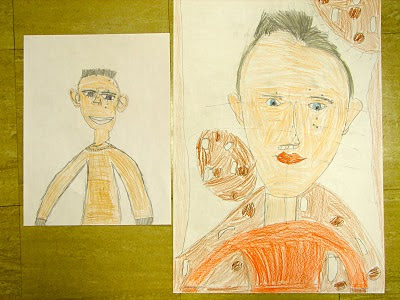 Students use string and watered down tempera paint to make these wonderful symmetrical mono prints.
Students use string and watered down tempera paint to make these wonderful symmetrical mono prints.Students Learned/Practiced:
-Printmaking
-Mono-printing
-Using materials appropriately
-Symmetrical
-Composition
The students first put their names on two pieces of paper, put on a paint shirt, grabbed a magazine, and sat ready to go. On their tables I placed water down tempera paint on bucket lids; red, yellow, blue. I then put two pieces of yarn in each color (about 14 inches long).
Next, the students squeeze the extra paint out of a piece of yarn and place it on one of their pieces of paper - with one end of the string sticking out.
The students place the 2nd paper on top of the first (which has the string on it) and put a magazine on top. Slowly pull the string out. Peal the papers apart and repeat until finished.









